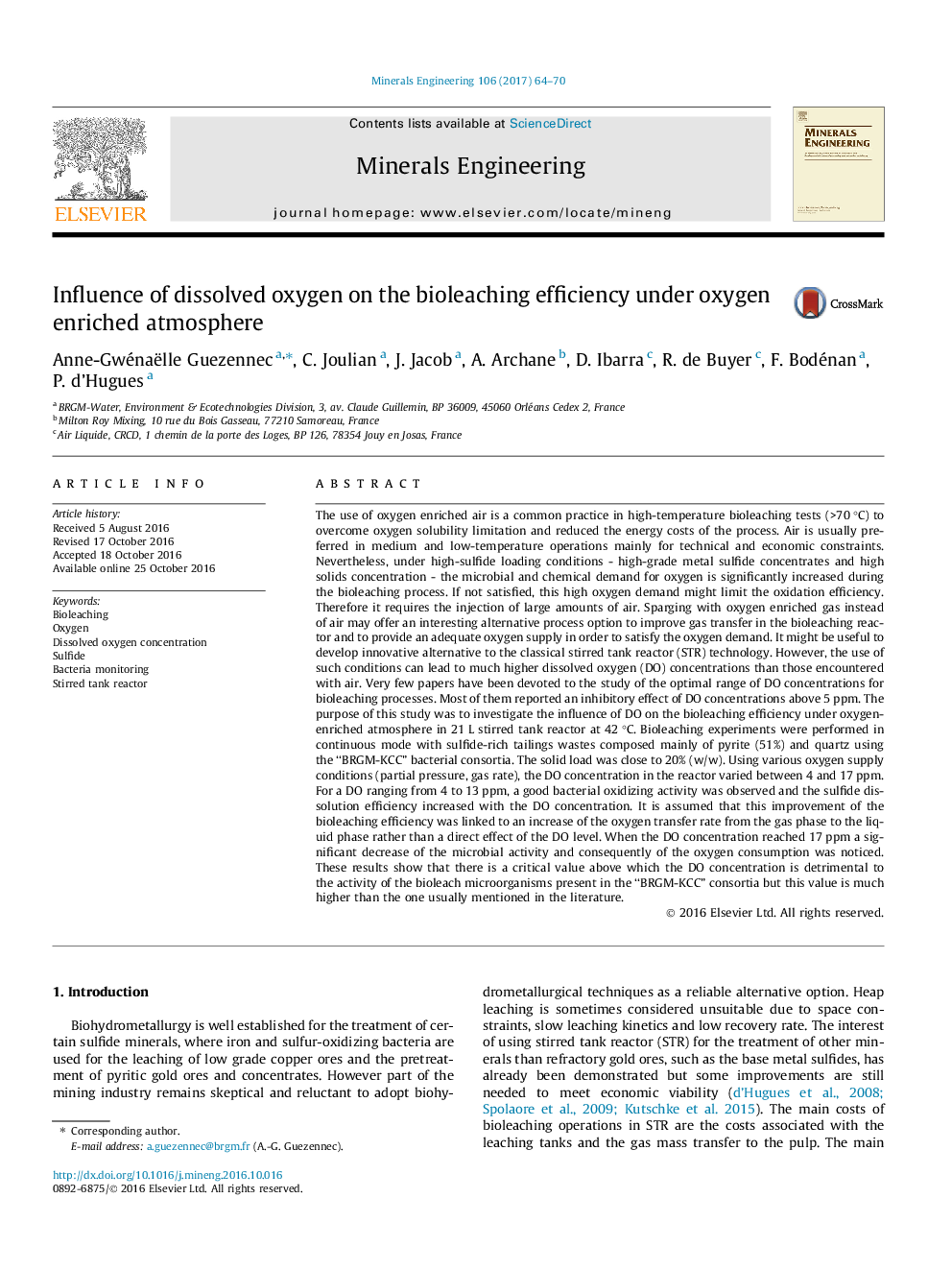| کد مقاله | کد نشریه | سال انتشار | مقاله انگلیسی | نسخه تمام متن |
|---|---|---|---|---|
| 6477826 | 1427606 | 2017 | 7 صفحه PDF | دانلود رایگان |
- Dissolved oxygen (DO) concentration was varied from 4 to 17Â ppm using O2 enriched gas.
- The oxidation rate increased with DO concentration until 13Â ppm.
- The microbial activity decreased significantly when the DO level reached 17Â ppm.
- The total biomass decreased when the DO concentration increased.
- At. caldus was the most affected by the increase of DO level.
The use of oxygen enriched air is a common practice in high-temperature bioleaching tests (>70 °C) to overcome oxygen solubility limitation and reduced the energy costs of the process. Air is usually preferred in medium and low-temperature operations mainly for technical and economic constraints. Nevertheless, under high-sulfide loading conditions - high-grade metal sulfide concentrates and high solids concentration - the microbial and chemical demand for oxygen is significantly increased during the bioleaching process. If not satisfied, this high oxygen demand might limit the oxidation efficiency. Therefore it requires the injection of large amounts of air. Sparging with oxygen enriched gas instead of air may offer an interesting alternative process option to improve gas transfer in the bioleaching reactor and to provide an adequate oxygen supply in order to satisfy the oxygen demand. It might be useful to develop innovative alternative to the classical stirred tank reactor (STR) technology. However, the use of such conditions can lead to much higher dissolved oxygen (DO) concentrations than those encountered with air. Very few papers have been devoted to the study of the optimal range of DO concentrations for bioleaching processes. Most of them reported an inhibitory effect of DO concentrations above 5 ppm. The purpose of this study was to investigate the influence of DO on the bioleaching efficiency under oxygen-enriched atmosphere in 21 L stirred tank reactor at 42 °C. Bioleaching experiments were performed in continuous mode with sulfide-rich tailings wastes composed mainly of pyrite (51%) and quartz using the “BRGM-KCC” bacterial consortia. The solid load was close to 20% (w/w). Using various oxygen supply conditions (partial pressure, gas rate), the DO concentration in the reactor varied between 4 and 17 ppm. For a DO ranging from 4 to 13 ppm, a good bacterial oxidizing activity was observed and the sulfide dissolution efficiency increased with the DO concentration. It is assumed that this improvement of the bioleaching efficiency was linked to an increase of the oxygen transfer rate from the gas phase to the liquid phase rather than a direct effect of the DO level. When the DO concentration reached 17 ppm a significant decrease of the microbial activity and consequently of the oxygen consumption was noticed. These results show that there is a critical value above which the DO concentration is detrimental to the activity of the bioleach microorganisms present in the “BRGM-KCC” consortia but this value is much higher than the one usually mentioned in the literature.
Journal: Minerals Engineering - Volume 106, 15 May 2017, Pages 64-70
